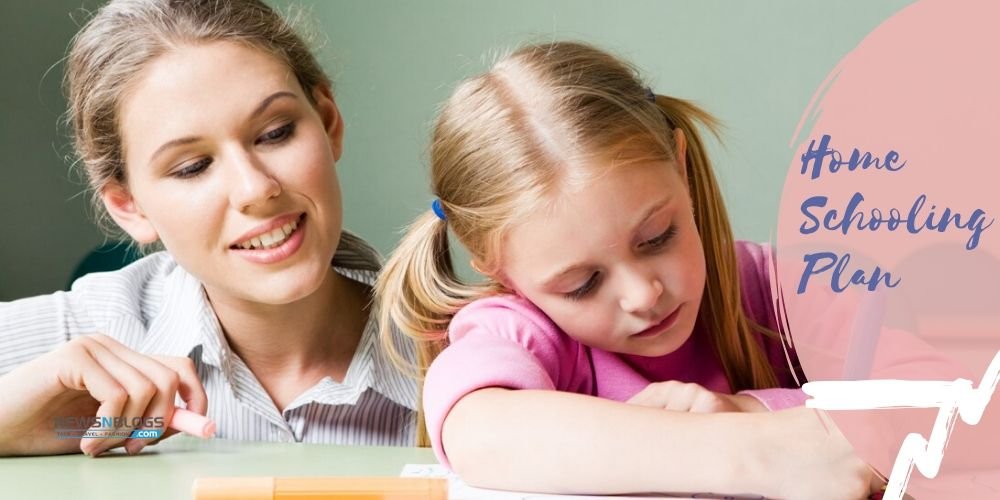Every second person you meet usually asks what class your daughter is in. In Which school she is going?
When I say that we are teaching our 6-year-old daughter at home, the first impression of the questioners is of surprise and the second of serious concern, this concern usually comes in the form of the following few questions.
- Will the daughter not be left behind?
- How to teach at home?
- How will the girl develop social skills to socialize with others?
- When she will join School?
- Won’t his personality deteriorate? Don’t let it create a feeling of deprivation?
The above and similar questions that have been and still are in the minds of people about homeschooling and there are countless researches for their answers which prove that children who have gone through homeschooling often go to school. Are better off socially, mentally, and emotionally than other children.
Read Also: 5 Tips for choosing the best Education Program
Now, however, the coronavirus has made it easy and common for everyone to understand how children can better develop educational and human values through homeschooling.
The benefits of homeschooling
1: Because of the hard work that goes into homeschooling, parents continue to develop themselves as role models. Every day, in the face of a new challenge, their knowledge grows deeper and wider day by day and the application of this knowledge makes their personality more attractive.
2: There is a deep and loving bond between parents and children.
3: Children have more opportunities to relax mentally and physically because they do not have to spend 2 hours preparing, waiting for the car and coming and going.
4: Due to the flexibility of learning times, parents and children are enthusiastic about educational sharing.
5: Basic human and moral values can be taught to children in a better and more effective way.
6: There is a significant reduction in expenditure on an annual basis that can only be used to improve children’s academic and practical abilities.
7: Parents can use better and more sophisticated academic curricula and tools for their children than at school.
8: It is easy to create a learning environment according to the interests of children living within your budget.
Home schooling map
Numerous methods can be used for home schooling. The most appropriate and scientific method is to first make a map of home schooling, such as mapping it before building a house so that it can be built. According to this, resources should be collected accordingly and a schedule should be made for the beginning to the end, doing so not only facilitates the architect but also makes the work standard and timely.
The following is a possible basic map to guide parents who have developed an interest in homeschooling and parenting during this lockdown (or even earlier).
Read Also: What is Career Guidance?
Remember that this plan is for basic guidance only and parents can improve or change it with their hard work, interest, and love.
Create a framework of basic concepts
First, after mutual consultation or consultation with experts, make a list of all the ideas that you want to make part of the child’s mind so that they become guidelines for the child, for example the purpose of life, the measure of success, The nature of the relationship with other people, what is the relationship with the earth and the universe, etc.
This framework can then be used as a guide to other tasks, activities and outcomes.
The skills parents need for home schooling
Make a list of all the skills and abilities that parents must have for the best and most effective home schooling so that they can act as the child’s teacher and mentor.
The following are some possible examples in this regard.
- Early Childhood Learning and the ability to implement it
- Basic information and key points of Child Psychology
- Basic information about Developmental Psychology
- Constantly keep up to date yourself about educational materials and resources available online
- Study, training, and practice to develop various personal qualities such as patience, hard work, passion, perseverance, problem-solving temperament etc.
- Ability to create an educational environment
- Different communication skills such as giving short lectures, telling stories, generating feedback, etc.
In addition to the examples mentioned above, you can use your mind to better plan for homeschooling.
Literacy, skills and abilities
In the most modern education systems in the world, the education and training of children is usually divided into 3 to 4 fields which are as follows.
Basic Literacy:
This usually involves reading, writing, and learning Urdu, English, Sindhi, Punjabi, Balochi, Pashto, or other languages.
Basic arithmetic:
This usually includes things like math, computer literacy, finance, cultural and science literacy.
Skills:
It usually teaches thinking, creativity, communication, vocational (such as carpenter, tailor, electrician, networking, etc.) or technology skills, including the importance of teamwork.
Children are usually taught physical strength, such as the concept of cleanliness, exercise, martial arts, swimming, cycling, etc., to cope with life’s difficulties and situations.
Read Also: Most in demand skills of 2020
This includes training to solve problems (such as home repairs, changing car tires, computer issues, etc.). And training in household chores (such as basic cleaning, laundry, buttoning, sewing, etc.).
Personal Attributes:
It usually involves empathy and love for others, perseverance, taking the initiative in any good deed, adapting oneself to the situation, bravery and leadership, and finding out about any problem with curiosity such Attributes are taught.
Standard and quantitative measurement of education and training
An important point is to test all the educational and training activities. In schools, children’s abilities are usually known through tests, examinations, etc. However, in homeschooling, you can better and more effectively assess the child’s mental, emotional, and physical abilities. Know the improvement or decline inabilities.
Read Also: How to Train Your Child to Face the Competitive World
For this, various methods such as tests, practical activities, projects, ranking of habits on an annual basis, etc. can be used according to one’s educational goals and desired results.
Starting point
This map seems to be quite expansive, but not all work together, they can be divided into the following three levels.
Short-term Initiatives
Instead of wasting time planning everything, start working on basic things like children’s basic literacy, start learning the basic skills needed by parents, as well as make a list of all the immediate steps to be taken.
Mid-term Initiatives
Work on creating a framework of basic concepts, start courses and workshops or research for the skills parents need. And work on creating the materials and resources needed for children. Make a to-do list for the next medium-term.
Long-term Initiatives
Work on a system of testing education and training, as well as combining the framework of basic concepts with every knowledge, ability, skill, and practical work.
Make a list of the important tasks that remain, so that you can start homeschooling during the Coronavirus lockdown.






